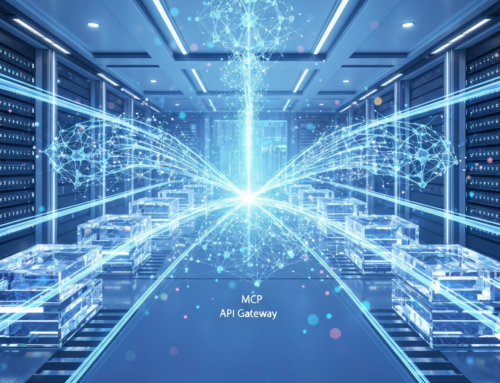Introduction to Agentic AI and Adaptive Automation
The landscape of business operations is undergoing a profound transformation, driven by the advent of artificial intelligence. At the forefront of this evolution is agentic AI, a sophisticated form of automation that moves beyond predefined rules to encompass autonomous learning, adaptation, and proactive decision-making. For modern enterprises, the ability to effectively orchestrate agentic AI is becoming a critical differentiator, paving the way for truly adaptive business automation.
Unlike traditional automation systems that execute tasks based on explicit instructions, agentic AI systems are designed to perceive, plan, and act independently to achieve specified goals. This paradigm shift enables organizations to build highly resilient and responsive operations that can self-optimize in real time, anticipating challenges and driving continuous innovation. Understanding this distinction is the first step toward harnessing the full potential of autonomous intelligence.
Defining Agentic AI: Beyond Traditional Workflow Automation
Traditional workflow automation has long focused on streamlining repetitive tasks through predefined rules and sequences. While effective for predictable processes, it often lacks the flexibility to handle dynamic environments or unforeseen variables. Agentic AI, however, represents a significant leap forward. An agentic system comprises intelligent agents that are capable of:
- Perception: Continuously monitoring their environment for relevant data and events.
- Cognition: Processing information, learning from interactions, and forming a nuanced understanding of their objectives and context.
- Planning: Developing strategies and sequences of actions to achieve goals, often adjusting plans dynamically.
- Action: Executing tasks autonomously, interacting with other systems and agents as needed.
This self-sufficient nature allows agentic AI to address complex, unstructured problems that traditional automation cannot. It’s a shift from merely automating tasks to enabling intelligent agents that proactively anticipate challenges, personalize experiences, and drive innovation by orchestrating ever-adapting processes.
The Strategic Imperative for Intelligent Operations
Businesses today face unprecedented pressures to increase efficiency, reduce costs, and accelerate time to market, all while navigating rapid market shifts. In this environment, intelligent operations are not just an advantage; they are a strategic imperative. Agentic AI offers a pathway to achieve this by embedding adaptive intelligence directly into core business processes.
The competitive edge derived from agentic AI stems from its capacity to empower operations to autonomously learn, adapt, and optimize in real time. This isn’t solely about speed or efficiency; it’s about creating a business ecosystem where systems can:
- Proactively identify and resolve issues.
- Personalize customer interactions at scale.
- Optimize resource allocation dynamically.
- Innovate service delivery and product development.
According to a report by the IBM Institute for Business Value, 86% of executives anticipate that by 2027, AI agents will significantly enhance the effectiveness of process automation and workflow reinvention. This statistic underscores the growing recognition among business leaders of the transformative power of agentic AI in achieving intelligent operations and gaining a sustainable competitive advantage.
Orchestrating Agentic AI: A Blueprint for Enterprise Transformation
Successful enterprise transformation through agentic AI is not accidental; it requires a deliberate and strategic approach to orchestrating agentic AI across the organization. This blueprint involves more than just deploying technology; it necessitates a fundamental rethinking of how work gets done and how humans and AI collaborate.
Key Elements of an Orchestration Blueprint:
- Holistic Strategy: Define clear business objectives and identify areas where agentic AI can deliver the most impact. This involves understanding existing processes and envisioning how autonomous agents can enhance them.
- Human-AI Synergy: Design systems where human oversight, decision-making, and creativity are elevated, working in concert with AI agents. The goal is to augment human capabilities, not replace them entirely.
- Platform Integration: Establish a robust technical architecture that allows various AI agents, data sources, and legacy systems to communicate and collaborate seamlessly. This is crucial for breaking down data silos and enabling end-to-end automation.
- Phased Implementation: Begin with pilot projects to validate concepts and demonstrate value before scaling across the enterprise. This iterative approach allows for learning and adaptation.
- Governance and Ethics: Implement strong governance frameworks to ensure AI agents operate responsibly, adhere to ethical guidelines, and comply with regulatory requirements.
The transition to autonomous operations demands significant organizational muscle, emphasizing the need for expertise and strategic investments rather than ad-hoc, do-it-yourself solutions.
Essential Components of an Adaptive AI Ecosystem
To effectively orchestrate agentic AI, businesses need a robust and adaptive AI ecosystem. This ecosystem is built upon several foundational components that work in harmony to enable intelligent automation:
Core Components:
- Specialized AI Agents: These are the individual autonomous entities, each designed to perform specific tasks or achieve particular objectives. They can range from customer service bots to supply chain optimizers.
- Orchestration Layer: This is the central nervous system that coordinates the activities of multiple AI agents. It ensures seamless communication, task hand-offs, and conflict resolution, allowing complex workflows to execute autonomously.
- Data Management and Integration: A unified data infrastructure that provides agents with access to relevant, real-time information from diverse sources. This includes data lakes, APIs, and integration platforms that connect agents to enterprise systems.
- Observability and Monitoring: Tools and processes for tracking the performance of AI agents, identifying anomalies, and providing insights into their decision-making. This ensures transparency and allows for continuous improvement.
- Human-in-the-Loop Mechanisms: Strategic points where human intervention or oversight is required. This ensures that critical decisions are reviewed and that complex or sensitive tasks remain under human control, maintaining trust and accountability.
Building such an ecosystem requires a blend of technical expertise, strategic foresight, and a commitment to continuous learning and adaptation.
Transformative Use Cases: Agentic AI in Action
The practical applications of orchestrating agentic AI span across numerous industries, demonstrating its potential for profound business transformation:
- Customer Service: Agentic AI can power intelligent virtual assistants that not only answer queries but also proactively resolve issues, personalize recommendations, and manage complex customer journeys without human intervention. This leads to improved customer satisfaction and reduced operational costs.
- Finance: Autonomous agents can optimize fraud detection, automate financial reporting, and manage real-time risk assessments. They can also execute complex trading strategies or reconcile transactions with unparalleled speed and accuracy.
- Human Resources: AI agents can streamline talent acquisition by autonomously screening candidates, scheduling interviews, and even onboarding new employees. They can also provide personalized support for HR queries and automate compliance checks.
- Supply Chain Optimization: In dynamic supply chains, agentic AI can predict demand fluctuations, optimize inventory levels, manage logistics, and autonomously re-route shipments in response to disruptions, leading to significant cost savings and improved resilience.
- Manufacturing: Agents can monitor production lines, predict equipment failures for proactive maintenance, and optimize resource utilization, leading to enhanced efficiency and reduced downtime.
These use cases highlight the shift from merely automating tasks to fostering intelligent agents that can proactively anticipate challenges, personalize experiences, and drive innovation.
Navigating the Future: Challenges and Best Practices in Agentic AI Adoption
While the promise of orchestrating agentic AI is immense, businesses must also navigate several challenges to ensure successful adoption. Overcoming these hurdles requires a strategic approach grounded in best practices.
Key Challenges:
- Skills Gap: A significant shortage of professionals with the expertise in developing, deploying, and managing agentic AI systems.
- Integration Complexities: Connecting new AI agent systems with existing legacy infrastructure can be challenging, leading to data silos and operational inefficiencies.
- Trust and Transparency: Ensuring that autonomous agents make decisions that are explainable, fair, and align with business objectives is critical for building trust.
- Governance and Ethical Considerations: Establishing clear guidelines for how AI agents operate, handle sensitive data, and interact with humans to prevent unintended consequences.
- Scalability and Maintenance: Designing agentic systems that can scale efficiently and be easily maintained as business needs evolve.
Best Practices for Adoption:
- Invest in Talent Development: Prioritize training and upskilling existing employees in AI and automation, and recruit specialized AI talent.
- Start Small, Scale Smart: Implement agentic AI in targeted areas with clear, measurable outcomes before expanding across the enterprise.
- Embrace a Hybrid Approach: Recognize that full autonomy isn’t always necessary or desirable. Design systems that leverage the strengths of both AI agents and human intelligence.
- Prioritize Data Strategy: Develop a robust data governance strategy to ensure agents have access to high-quality, relevant data.
- Establish Clear Metrics: Define key performance indicators (KPIs) to measure the impact of agentic AI on business outcomes and continuously optimize.
Empowering Your Business with Autonomous Intelligence
The journey towards an intelligent, adaptive enterprise is inherently tied to the effective implementation and orchestration of agentic AI. This advanced form of automation is not merely a tool for efficiency; it is a catalyst for fundamental business transformation, empowering organizations to operate with unprecedented agility, foresight, and resilience. By embracing a strategic approach to orchestrating agentic AI, businesses can unlock new levels of operational excellence, drive innovation, and redefine their competitive landscape. The future of business is autonomous, intelligent, and deeply integrated, and the time to build that future is now.
Ready to empower your business with autonomous intelligence? Let Idea Forge Studios help you orchestrate Agentic AI solutions for your web development, e-commerce, and digital marketing needs. Schedule a consultation, call us at (980) 322-4500, or email us today.








Get Social